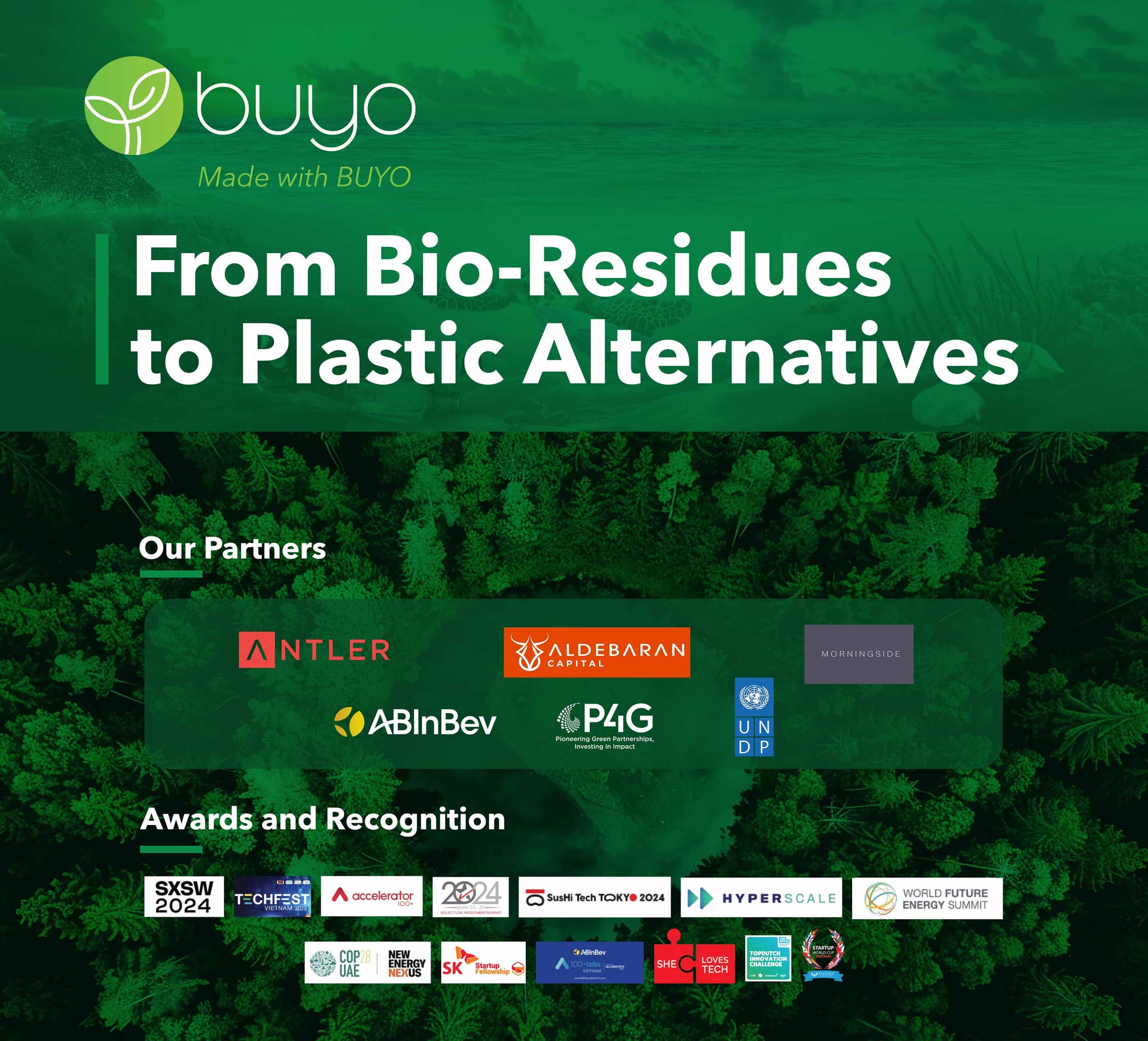From fermentation to forks, BUYO’s founder walks us through the real mechanics of bioplastic at scale, and what it takes to make it work globally.
1. Your bioplastic is derived from bio-waste and plant-based materials. What specific properties of this waste stream made it suitable for conversion into high-performance plastics?
BUYO leverages bio-waste streams rich in natural polymers, fibers, and organic compounds, particularly agricultural residues and non-food plant biomass. These waste materials contain cellulose, hemicellulose, and lignin, which provide excellent mechanical strength, thermal stability, and barrier properties when properly engineered.
Their biochemical composition and structural integrity make them ideal feedstocks for polymer synthesis and blending, allowing BUYO to achieve durable, moldable, and water-resistant materials that perform comparably to conventional plastics, without relying on food resources or petroleum inputs.
In short, the inherent polymeric structure, renewability, and local availability of these bio-waste streams make them both sustainable and technically suitable for conversion into high-performance, plastic-free materials.
2. Can you outline the core stages in your proprietary conversion process and explain how it differs from conventional bioplastic manufacturing methods?
We have 2 patented technologies as listed below:
- (1) Bio-technology: We use a bio-fermentation process to create our bio-core material, which is a very unique and premium material that can be used in medical, cosmetic and textile applications.
- (2) Material Engineering: We combine processed/treated biowaste with other bio-polymers to create a compound to make our own bio-material resin. From this, we can have a variety of applications, from consumer products such as cutlery, plate, cup, straw, food container, etc., to industrial products like keg cap, pallet, container, etc.
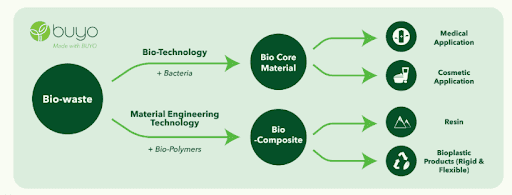
3. BUYO’s products are biodegradable in natural environments. How do you verify biodegradability across different climates and disposal conditions?
BUYO’s materials have undergone Disintegration and Ecotoxicity tests certified by TÜV Austria under Biodegradability Testing for both Home Compost and Industrial Compost standards. These tests confirm that BUYO’s bio-material fully breaks down into natural elements (CO₂, water, and biomass) within controlled composting environments without leaving toxic residues or harming soil organisms.
To verify biodegradability across different climates and disposal conditions, BUYO conducts extended field testing and third-party assessments in varied environment, such as tropical, temperate, and dry conditions, to simulate real-world end-of-life scenarios. Continuous monitoring ensures that the materials retain high degradation performance and ecological safety beyond standardized lab settings.

4. What measures do you take to ensure that the upcycled bioplastic retains consistent mechanical properties suitable for demanding applications like medical packaging?
Our Biotechnology is still under R&D. We have not been commercializing any medical packaging yet at the moment.
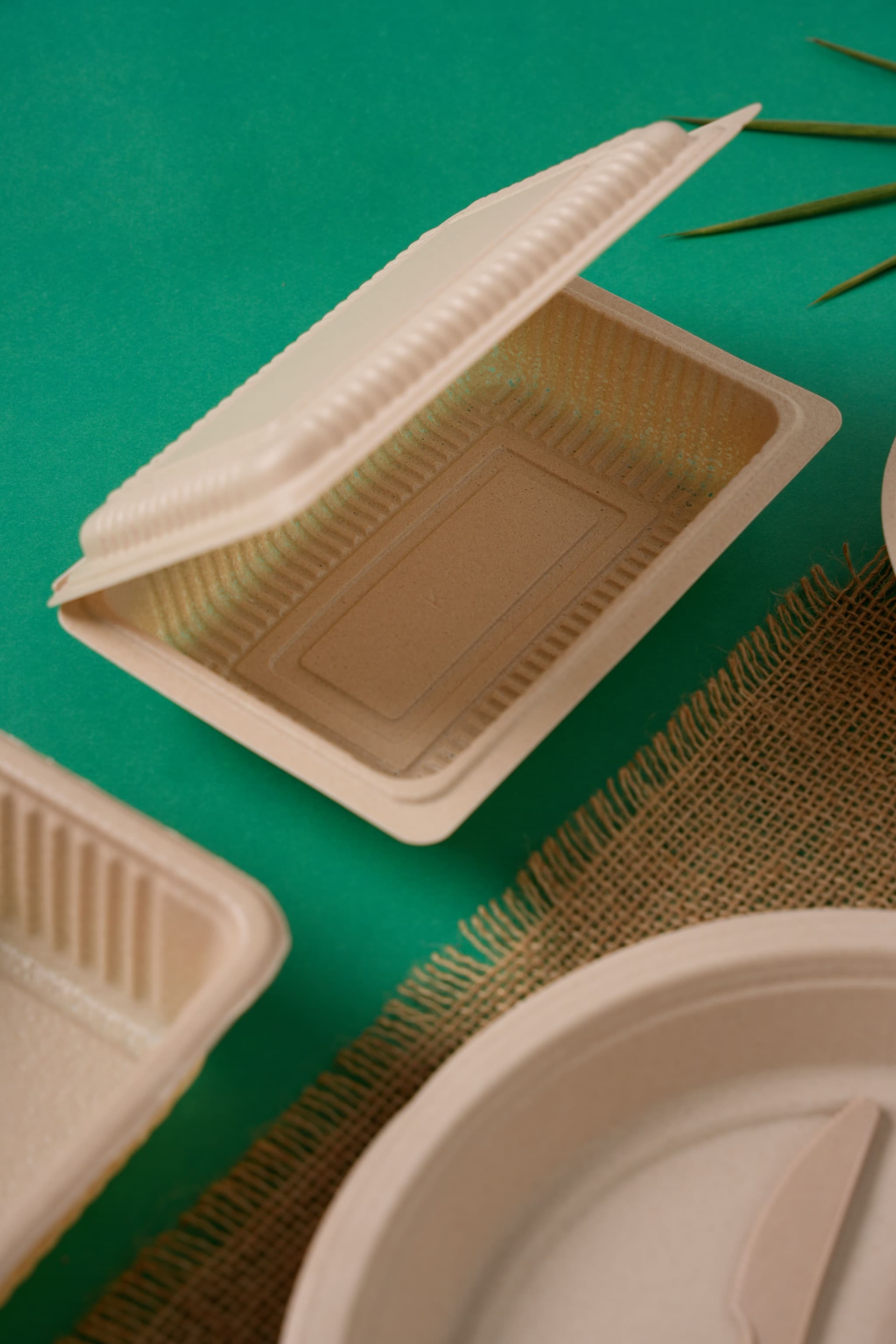
5. In terms of lifecycle impact, how does your material compare to petroleum-based plastics and other bioplastics on the market?
Compared to petroleum-based plastics, BUYO’s materials achieve a significantly lower carbon footprint and reduced energy consumption throughout their lifecycle. They are made from non-food plant-based and bio-waste resources, eliminating dependence on fossil inputs and avoiding competition with food supply chains.
Unlike many bioplastics that require industrial composting or special additives, BUYO’s materials are biodegradable in natural environments, including home compost and soil, leaving no microplastic residue. This enables a truly circular, low-impact lifecycle, from renewable sourcing and efficient production to safe, natural degradation.
Our material advantages are specified as follows:
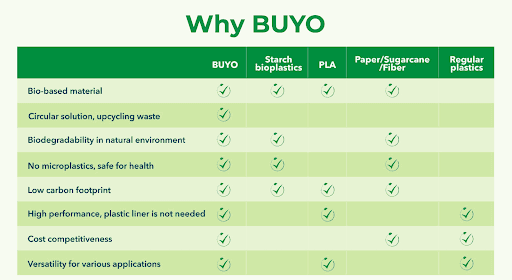
6. What technical challenges did you encounter in adapting your material for both flexible and rigid packaging formats, and how were they resolved?
Developing a single bioplastic platform adaptable to both flexible and rigid packaging presented key challenges in mechanical strength, flexibility, and process compatibility. Early formulations that achieved high durability tended to lose flexibility, while softer blends lacked structural integrity.
BUYO addressed this by optimizing polymer composition and compounding techniques, adjusting biopolymer ratios and natural fiber reinforcement to fine-tune performance. Through iterative R&D and pilot-scale trials, the team developed modular formulations that can be processed using existing plastic manufacturing lines, enabling a seamless transition from thin films to rigid containers, without compromising biodegradability or functionality.
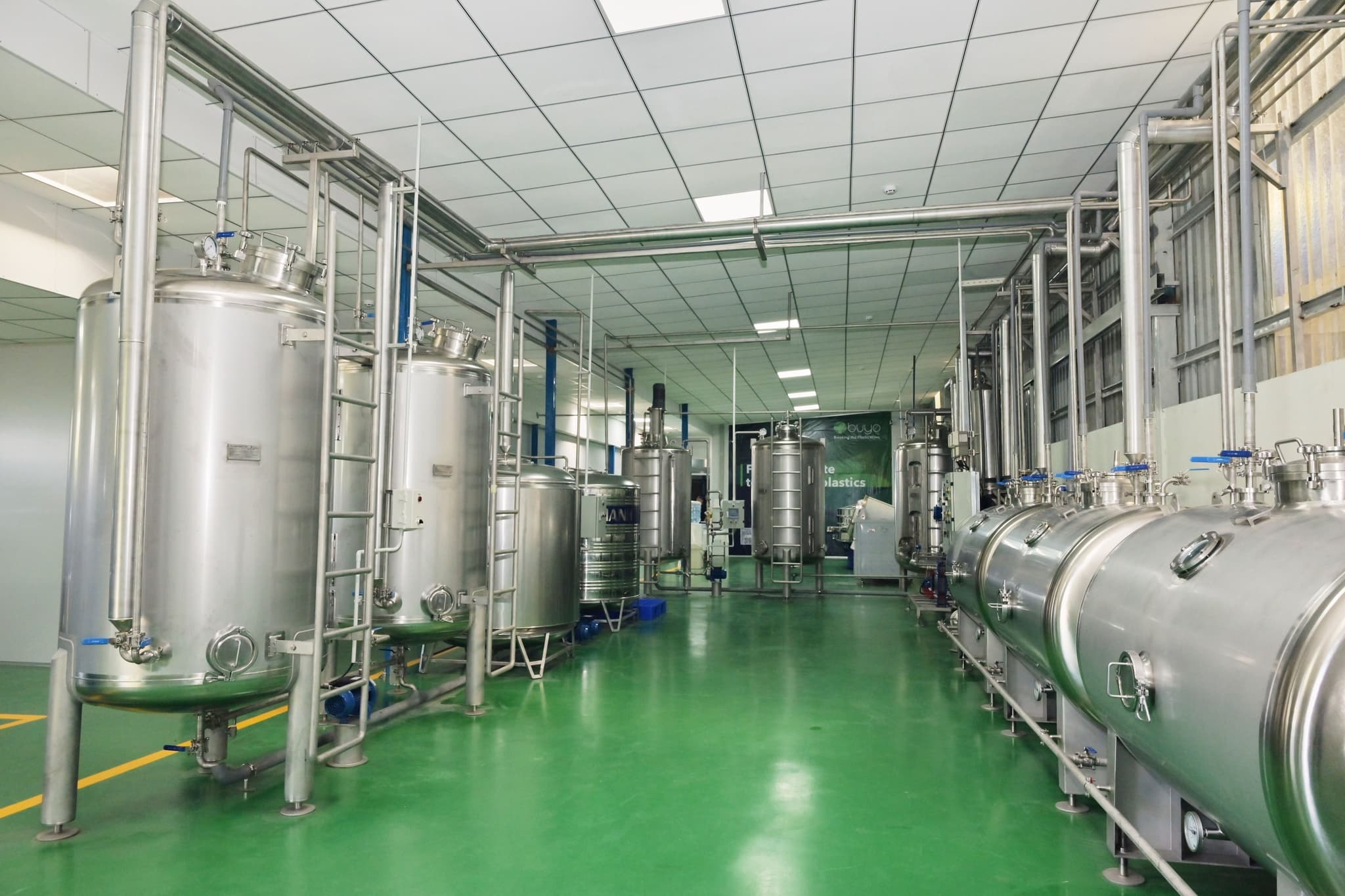
7. As demand for circular materials increases globally, how do you see BUYO’s model adapting to other geographic regions or waste sources?
As global demand for circular materials grows, BUYO’s model is designed to be regionally adaptable and resource-efficient. Our technology can utilize diverse local bio-waste streams, from agricultural residues to food processing by-products, allowing us to replicate production close to waste sources and reduce transportation emissions.
By partnering with local industries, research institutes, and waste management systems, BUYO can tailor formulations to each region’s available biomass and climate conditions while maintaining consistent material performance and compostability standards. This decentralized, circular production model enables scalable impact and supports localized green economies worldwide.
8. What innovations are you exploring next, either in formulation, processing, or end-of-life treatment, to further reduce the footprint of your bioplastics?
BUYO is actively exploring innovations across formulation, processing, and end-of-life management to further minimize environmental impact. On the formulation side, we are enhancing bio-polymer blends to improve mechanical performance while increasing biodegradability in diverse natural conditions. In processing, we are developing energy-efficient manufacturing techniques compatible with existing plastic production lines to reduce carbon emissions. These initiatives aim to create truly circular, low-footprint bioplastics that outperform both conventional plastics and current bioplastics in sustainability and functionality.
9. With the recent P4G partnership and grant support, how do you plan to strategically allocate resources, across scaling production, advancing R&D, or entering new markets, and what role does this recognition play in preparing BUYO for future investment?
We are planning to use this P4G Grant in order to do exactly the following:
- Scale up production to make biodegradable bioplastics more accessible and affordable, supporting mass commercialization
- Expand markets to increase adoption of biodegradable bioplastics and enable higher reduction of food waste and carbon
More information about this P4G partnership can be found here
The P4G partnership is more than financial support, it's a strategic enabler. It builds credibility, mitigates risk, opens networks, enhances ESG appeal, and positions BUYO to successfully attract and retain future investment needed for scale and global impact.
1. Credibility and Validation: P4G is a globally recognized platform that supports impactful partnerships aimed at achieving sustainable development goals. Receiving their endorsement and grant:
- Validates BUYO’s business model and impact potential in sustainability.
- Signals third-party due diligence has been passed, which reassures investors about the company’s viability and credibility.
2. De-risking for Future Investors: The grant funding from P4G:
- Reduces the capital risk for early investors by covering critical costs in product development, market entry, or pilot phases.
- Demonstrates external confidence, which makes BUYO a more attractive investment.
3. Improved Access to Networks: P4G connects companies to a global ecosystem of investors, policymakers, and sustainability experts. For BUYO, this means:
- Access to impact investors and climate funds actively looking for scalable green technologies.
- Opportunities to form additional strategic partnerships that enhance the company’s growth trajectory.
4. Stronger ESG Positioning: Investors are increasingly looking for high-impact ESG (Environmental, Social, Governance) opportunities. BUYO’s P4G recognition:
- Strengthens its position as a mission-aligned, climate-positive business.
- Helps attract impact-driven capital, such as blended finance, green bonds, or venture philanthropy.
5. Pathway to Scalability: Grant support allows BUYO to:
- Accelerate R&D and commercialization efforts.
- Build a track record of measurable impact, critical for Series A and beyond.
- Prepare robust data and performance indicators, which are essential for due diligence by institutional investors.
